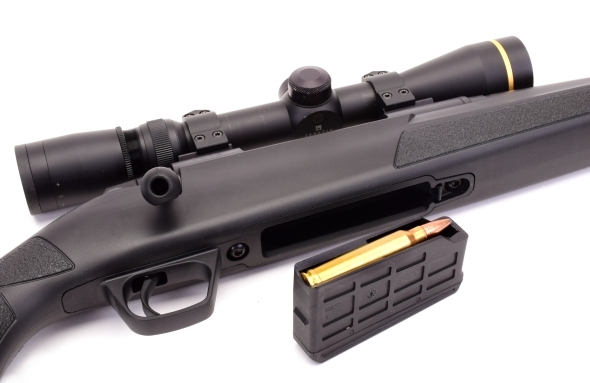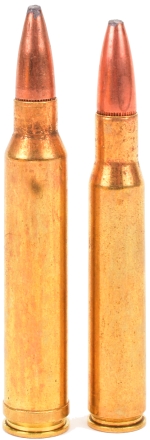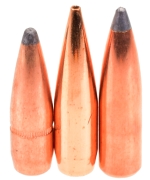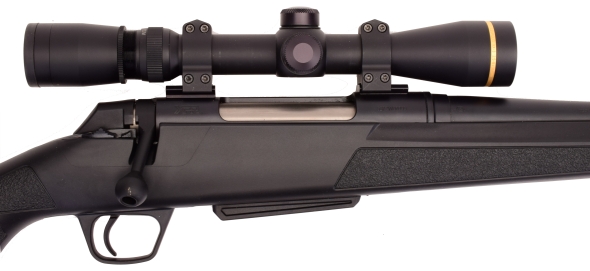It is interesting to look back over a lifetime of being a firearm enthusiast; rifles, handguns, handloading, hunting, target shooting, friends, and business associates. So much has changed, remarkably so, I suppose just like everything else in this world. I was waiting for the synthetic stock trend to run its course, right up until I realized wood stocked firearms are the trend running its course. Growing smaller each year as the number of people who appreciate them do the same, it is a trend I should have anticipated.
A half century ago there were many blue collar families deriving family income from manufacturing jobs. People worked with their hands, practicing trades and applied the knowledge they acquired to personal life interests. Picking up a firearm with a hand checkered stock and finely finished hardware, most enthusiasts understood the effort that went into a hand rubbed oil finish or a tight fit of wood to steel and cleanly cut borderless checkering. It was easy to appreciate the effort that went into designing and producing a smooth action and clean trigger and to admire the talent required to achieve a high degree of accuracy.
There are highly skilled, young people making artful firearms these days and more are developing right behind them. As a percentage, however, these people form a very small percentage of the general population. More typically, folks spend most of their free and work time in front of a computer or texting or engaged in social activities of a more festive nature. Competent and comfortable with technology, fewer people have metal or wood working skills. If the car they drive does not start, they get out and peer into its tailpipe. If they are handed a Stan Chen 1911, they might say it looks just like the Rock Island Arsenal GI model they once shot. So today’s modern firearms had to change to keep pace with market demands.

As covered at length in Part 1, the Winchester XPR Bolt Action Rifle is all business and quite attractive in the modern technology definition of the word. A product of automation and machines, the finish is without imperfection, both composite stock and metal pieces and it has proper heft and balance typical of a quality product. The action is slick cycling and the centering poly magazine fed without a hiccup. It is one of the few rifles I’ve worked with of late where the magazine latched and unlatched without the rifle putting up a fight.
The XPR is a better hunting firearm than the products of my wood stock generation; no end of season refinishing required. I’d suspect the XPR’s stock could be used as a club, none the worse for wear, and replaced at a modest cost in the event its buttstock was back over by a pickup truck or its owner gets a spot on Swamp People and a gator gnaws on the gun. Finally, this rifle can shoot, and it doesn’t matter if the temps are high or low or if humidity runs from tree branches that snap to raindrops pouring on your head. The first range day for this rifle was notable with sub zero temps and snow flurries. The second range day, three days later, was marked with Fahrenheit temperatures in the mid 60s and static electricity found at every touch. Groups shot were approximately the same and the rifle was secure and intuitive in handling, dry or wet.
The .300 Winchester Mag-a-num

If I had my druthers, and successful hunting and hunting trips were high on my lists of items of importance, I would definitely buy an XPR in 30-06 Springfield. No, make that the .300 Winchester Mag. Oh, hold on a minute, make that the… In reference to the question 30-06 Springfield or 300 Winchester Magnum I would have to say “Yes”, absolutely. The .300 Winchester Magnum is a supposed to provide a measureable margin of increased performance over the nearest standard cartridge and I believe that goal is achieved, but it looks like this with a 200 yard zero –
|
30-06 Springfield to 300 Winchester Magnum 24″ Barrel 165 Grain |
|||||||
|
Cartridge |
Indicator | Muzzle | 100 | 200 | 300 | 400 | 500 |
| 30-06 Springfield | FPS | 2960 | 2750 | 2599 | 2357 | 2173 | 1997 |
| 300 Winchester Magnum | FPS | 3260 | 3035 | 2821 | 2617 | 2422 | 2235 |
| 30-06 Springfield | Ft/Lbs | 3209 | 2769 | 2380 | 2034 | 1729 | 1461 |
| 300 Winchester Magnum | Ft/Lbs | 3893 | 3373 | 2915 | 2505 | 2148 | 1830 |
| 30-06 Springfield | Trajectory “ | -1.50 | 1.60 | 0.00 | -6.90 | -20.10 | -40.70 |
| 300 Winchester Magnum | Trajectory “ | -1.50 | 1.10 | 0.00 | -5.50 | -16.10 | -32.70 |
Shifting to a best zero approach at 248 yards, the 30-06 Springfield has a 291 yard point blank range. The same approach with the 300 Winchester Magnum sets best zero of 217 yards and extends its point blank range to 318 yards, a 27 yard improvement in point blank range but a 21% pick up in kinetic energy that increased to 25% more at 500 yards.
The big 300 Weatherby Magnum and 300 Remington Ultra Mag tack on approximately 130 fps with equal 26″ barrels, but they bring higher ammunition costs and with significantly more recoil. As a practical matter, the pick up on the effort is 8 yards of point blank range. There are bigger magnums, but none that are even remotely a necessity for hunting in the Americas and they only further increase ammo cost and recoil. As a brittle boned old goat, I can say with confidence that the 300 Winchester magnum at this weight and stock geometry are very manageable.

The Winchester XPR was tested with 4 types of ammunition; one factory and three handloads. The load data is included below for reference.
Remington Express Core-Lokt 150 grain PSP rated at 3290 fps was chronographed 3285 fps. Group size 0.9″.
Hornady 150 grain BTSP, once fired Remington Brass, Primer CCI 250, 3.340″ COL, 75.0 grains H4350. 3277 fps. Group size 1.1″
Berger 168 grain VLD Hunting, once fired Remington Brass, Primer CCI 250, 3.340″ COL, 79.0 grains H4350, 3166 fps. Group size 0.7″
Nosler 180 grain Partition SP, once fired Remington Brass, Primer CCI 250, 3.340″ COL, 72.0 grains IMR 4831, 3032 fps. Group size 0.9″
The bullets selected within each weight group are typical and just happened to be handy. There are many other choices for the handloader. The same applies to powder and primers selected. Probably the best news is that the Winchester will deliver very good performance with off the shelf and very standard factory ammunition.
Conclusions?
Sure… I’m old, cranky and I still like walnut stocked Winchester Model 70 rifles as a preference. However, the Winchester XPR is a good looking synthetic stocked rifle that shoots as well as any Model 70 I’ve picked up during the past couple of years, even though it isn’t a Model 70. I would not hesitate to give this rifle to a younger hunter as I am sure it would serve them well and require a minimal amount of upkeep..

Looking at all of the value priced rifles that currently permeate the firearms market, I can honestly say this is one of the nicer products. Nice gun, good cartridge.
Winchester’s XPR Bolt Action Rifle Part 1
Winchester’s XPR Bolt Action Rifle Part 2

Email Notification